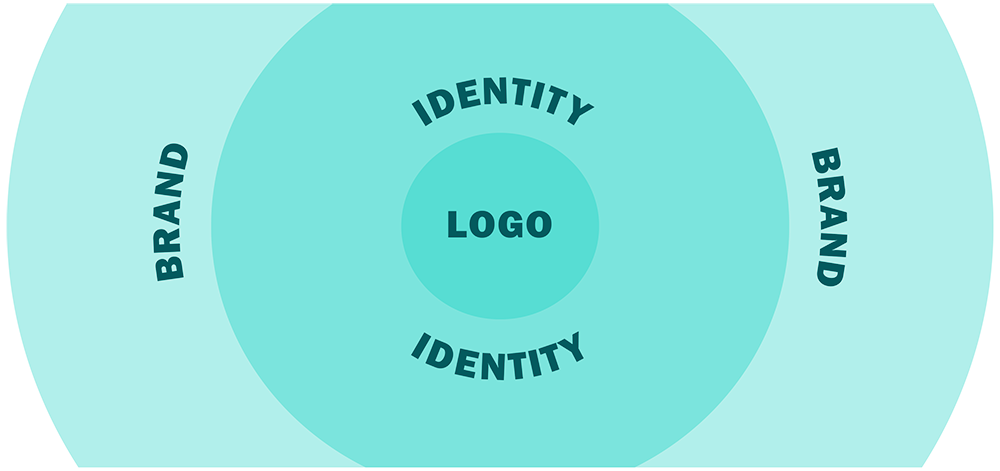
You don’t need a logo. Yep, you heard me correctly. Red Thread’s director of design, who brought you such passionate pronouncements as Marketing for Design is Not Subjective and Your Billboard Advertising Shouldn’t Be An Essay is back again to explain that you, in fact, don’t need a logo.
Do you need a logo? How to determine what your business really needs
Okay, you may need a logo – but what I mean is you don’t need just a logo. While it’s true that logos are the most recognizable brand identifiers, you can’t expect your logo to support your organization’s entire marketing needs. Your logo should be a valuable part of your brand – but it’s not the linchpin. You need to think bigger.
Try Starting with Why
If you’ve heard us say it once, you’ve heard us say it a million times: we live by the Simon Sinek adage “start with Why.” In a perfect world, a company’s brand (which includes the aforementioned logo) would be created through a rigorous and extensive process of exploration. The process would kick off with establishing your organization’s Purpose, on which our CEO and Director of Strategy wrote a thorough explanation of what that is and why that matters. If that was TL;DR, here’s the condensed version:
So, to say it again, you don’t need a logo. You need a Purpose statement. When you establish your organization’s Purpose, you’re creating the map that will guide all your decisions from here on out – including your brand.

check out our blog
Purpose –
Why it Matters in Business and Why you Should Care
Brand, identity, and logo relationship explained
Brand. Identity. Logo. If you’re in the marketing world, you’ve heard these terms used a lot, maybe sometimes interchangeably depending on the source. You may be asking yourself, “Exactly WHAT is considered a brand? How does my organization’s Purpose serve my brand’s identity? And, for real, do I really not need a logo?”
Logo
If you want just a logo, you’re really putting a lot of pressure on one little mark to convey a lot of information. Everyone may now associate the Nike swoosh with athleticism, innovation, and quality. But back in 1971, the mark was worth a whopping $35 that was paid to graphic design student Carolyn Davidson for its creation. Years of successful storytelling, high-end apparel, and famous affiliations helped establish those qualities valued by consumers.
To clarify: your logo is only one part of your identity; your identity helps create your brand. Still confused? Here’s the relationship between the three:

Brand: The perceived emotional corporate image as a whole
Identity: The aspects that form part of the overall brand – visual and otherwise (both fonts, colors and iconography, but also taglines, tone of voice for communications, etc).
Logo: a mark or icon that identifies a business
Since the human brain can process images 60,000X faster than words, here’s an infographic to demonstrate the above:

According to Casey Shagena, Brand Cultivator & Co-Founder at Aliado, “Companies that try to tell their entire story within their logo typically end up with a bit of a chaotic mess — a logo that dates quickly and ends up needing a redesign in a few years.” Your logo can’t be an island – it needs supporting materials that help establish meaning. This meaning makes it become more than just a mark.
So you don’t need a logo – you need an identity system.
Identity
So, if you’ve used your Purpose as a guide in beginning the logo design process, you’ve hopefully ended up with a visual identifier that feels right for your organization – that is not at odds with your Why. Now you need to establish an identity system that supports this.
Your identity system provides the guidelines for the use of your logo, but also more concrete items like color palettes, fonts, preferred usage, taglines, and even tone of voice in both visual and written communication. Brand Designer Jacob Cass on identity systems:
These guidelines ensure that the identity of the company is kept coherent, which in turn, allows the brand as a whole, to be recognizable.
It’s important to note that these guidelines run along the backbone of your organization. They mesh with your core values and can be easily identified by both your internal stakeholders and external audiences.
This case study on AirBnB’s logo, ‘belo,’ wonderfully demonstrates how alone, a logo means very little, but by examining your organization’s goals, you can add value and meaning to your mark:
“For so long, people thought Airbnb was about renting houses. But really, we’re about home. You see, a house is just a space, but a home is where you belong. And what makes this global community so special is that for the very first time, you can belong anywhere. That is the idea at the core of our company: belonging.”
Brand
To review what we’ve learned so far:
- Your logo is a mark that visually identifies your company.
- Your identity system consists of your logo but also supporting communication (both visual and written) materials that provide context and support for your logo.
So where does brand come into the picture?
As our infographic above depicted, your logo and your identity system help construct your brand experience – otherwise known as other people’s perception of your organization. But your brand is not just your visuals. To quote Dan Pallotta’s article for the Harvard Business Review, “A Logo is Not a Brand, “

“Brand is everything, and everything is brand.”
In other words, your brand is made up of much more than a logo. On the short list of things that contribute to brand experience:
- Customer Service: When asking consumers what impacts their level of trust with a company, offering excellent customer service ranked number one. If your organization professes to value making their customers’ lives easier but offers only poorly automated help-line numbers for problem-solving – your brand is not aligning with your Purpose.
- Authenticity: Speaking of trust, consumers rank trustworthiness, creativity, and authenticity as the most important brand attributes. 86 percent of consumers say authenticity is important when deciding what brands they like and support. At the same time, more than half of consumers think that less than half of brands create content that resonates as authentic.
An excellent example of brand authenticity (though it may work against our point on customer service…) is Chicago-based hotdog joint, Wiener’s Circle. (Warning: while the following video is definitely NSFW, it’s absolutely safe for reiterating this point):
- Employees: Only 14% of customers defect to other brands because of low product quality. However, 68% of customers defect because of perceived staff indifference. The employees you hire should honor your Purpose and embody your values. Not only will they be more engaged and productive (which is better for your bottom line), but they are touchpoints for your company. They are as much responsible for creating your brand as your marketing department is.
So, you don’t need a logo – you need a brand.
If I don’t need a logo, what do I need?
Circling back to something I mentioned at the beginning of this article, it never hurts to think bigger. And if bigger is not necessarily in your budget, then maybe just think better. A good strategic partner can help take your requests for a logo (or top Google search results, or more Likes on Facebook) and translate them into SMART goals for your organization – and eventually, into a better bottom line (financial or otherwise).
Looking for that strategic partner? We’d love to connect! If you’re not in the market for a logo (or you know, any of the other offerings explained above), but still interested in hearing more from us, you can follow us on Facebook, LinkedIn, and Instagram.